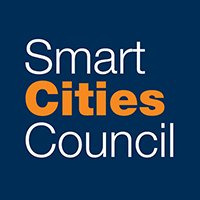Why Dallas is taking a look back to move forward
The Dallas Smart City Living Lab is a very good example of how a city can initiate several integrated projects in a small slice of an urban environment. It’s also a very good example of why collaboration and citizen engagement are key elements that help guarantee successful outcomes.
The Dallas Smart Cities Living Lab is a four-block West End corridor in that is home to nine smart cities projects ranging from smart street lights to digital information kiosks. The project was launched in March 2017, and this week the Dallas Innovation Alliance (DIA) released its year-end case study of Living Lab project results, their impacts and more.
The Living Lab is very much a product of collaboration with more than 30 partner organizations spanning public, private, academic and civic sectors and 20 city departments, with the DIA acting as research and development partner — and input from other cities. And the city is using Council Global Lead Partner AT&T’s Smart Cities framework and IoT technology.
The primary purposes of the Living Lab are to serve as a testing ground for emerging technologies that fit the city’s priorities, efficiently use internal and external resources and improve the city’s quality of life.
As Dallas Mayor Mike Rawlings said in a statement, “The intention of becoming a smart city is to improve operations, sustainability and create an inclusive and prosperous city, testing the data and technology provides a catalyst in preparing Dallas for the future. The Dallas Innovation Alliance is a valued partner in elevating a culture of innovation in Dallas, and the insights generated by the Living Lab will be utilized as a tool to evaluate the potential of these technologies to reach our goals as a city.”
The case study, which can be found at the DIA website, includes recommendations on projects to be deployed throughout the city and others to be scaled for neighborhoods. It also includes discussion of what should be considered before a major rollout, topics such as cybersecurity, data ownership and monetization, citizen data policy, infrastructure standards, open data and more.
As for results of the Living Lab projects, here are a few highlights:
- a 13% increase in pedestrian traffic
- a 6% decrease in crime
- a 12% increase in revenue for local businesses
- a 35% reduction in energy costs through its smart street lighting pilot project (which would translate to at least $90 million in operations cost savings over the LED bulbs’ life span if intelligent controls were deployed for all of the city’s street lights)
- and average monthly use of interactive information kiosks of more than 440 people
DIA Executive Director Jennifer Sanders offered a more detailed description of the Living Lab’s purpose. “From the beginning of this initiative, the purpose of the Living Lab was to provide valuable insights through ‘test driving’ forward-thinking technologies that benefit the City of Dallas and its residents. Through this case study, we are providing our first comprehensive look at the potential of smart city initiatives across our city, and hope to offer a resource that is of value to cities across the country who are embarking on their own smart city programs.”
Next up…
For the next phase, the DIA will concentrate on solutions for mobility, public safety, the digital divide and others. It also is working with the Dallas Entrepreneur Center, UT-Dallas, AT&T, Council Global Lead Partner Microsoft and Lead Partner Cisco on a smart cities incubator.
Jesse Berst is the chairman of the Smart Cities Council, which helps cities use technology to become more livable, workable and sustainable. Apply now for the Council’s Readiness Challenge, which provides tools and hands-on mentoring to help cities accelerate their smart cities initiatives.





















